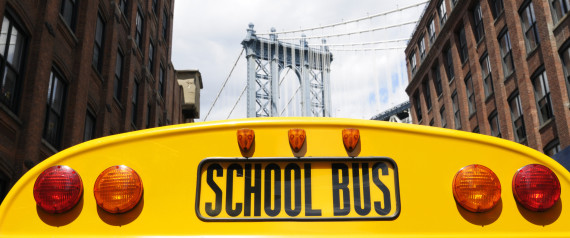Posted: Updated:
Print Article
A so-called school-to-prison pipeline flows from school discipline that lands disproportionately on students with disabilities and students of color, according to a set of reports by 26 experts released on Thursday.
African-American students and students with disabilities are suspended at "hugely disproportionate rates compared to white students," said a report by the Discipline Disparities Research-to-Practice Collaborative, which includes experts from fields such as advocacy, policy, social science and law. Latino students, girls of color, and lesbian, gay, bisexual and transgender students also were disproportionately suspended -- a punishment the report said increases dropout risks and helps push troubled students out of classrooms and into the justice system.
"We already knew that African Americans were disproportionately affected, but this new research is also saying that it's also Latino students, it's also students with disabilities, it's also girls of color," said Russell Skiba, the Indiana University professor who directed the project. "LGBT students may be at risk for increased discipline. These things have a big effect on achievement."
The researchers found that black students were 1.78 times as likely to be suspended out of school as white students. Latino students' suspension odds were 2.23 times greater than those of white students. Students with disabilities were suspended at twice the rate of their non-disabled peers, and for longer durations. Worse, 25 percent of black students with disabilities received at least one out-of-school suspension in the 2009-2010 school year.
Research shows that removing so-called "bad kids" from the classroom doesn't help non-disruptive kids learn, according to the collaborative. The group found that some restorative justice programs and prevention programs that call for more student-teacher engagement can help lower suspension rates and minimize disruptions. The researchers also found that school police often make arrests for “what might otherwise be considered adolescent misbehaviors.”
To reach these conclusions, the group relied on research studies, as well as data from the U.S. Education Department. “Several studies indicate … that racial disparities are not sufficiently explained by the theory that black or other minority students are simply misbehaving more," the collaborative wrote.
The idea of a school-to-prison pipeline that punishes students of color and students with disabilities more than their peers has gained steam in recent months. In January, the Obama administration released its first legal guidance on school discipline, telling schools that they may be legally accountable for the disparate impact of their actions on different races, and that they are liable for all disciplinary actions in their buildings -- even those committed by police not employed by the school district. The guidance relied on the Civil Rights Act of 1965.
In late February, President Barack Obama himself highlighted the problem with the launch of the My Brother's Keeper initiative. The program kicked off with $200 million in foundation money aimed to help males of color succeed in school and graduate into steady work through mentorship and communal solutions. Some of those efforts, according to a White House memo, will be school discipline reform.
"School districts have just been put on notice and now we're showing them there's real research to show that there are alternatives to frequent use of suspension that will not just reduce suspensions but also reduce racial disparities," said Dan Losen, a member of the collaborative who directs the University of California, Los Angeles, Center for Civil Rights Remedies.
The report comes more than one year after the mass shooting at an elementary school in Newtown, Conn., which prompted many schools to increase security with more police. But those impulses often create tension with efforts to reduce discipline disparities.
According to the collaborative, evidence “suggests that police presence in schools, particularly armed police, should be a very last resort in school discipline strategies.”
"There is a tendency in times of threat to focus on implementing more extreme solutions," Skiba said. "There are schools that feel they need to use metal detectors or video surveillance but we also need to realize that kids who really get to the point where they want to engage in these incidents, they're looking for ways around those things. Our best bet is to be comprehensive from the start and say let's look at all levels."
"There is a tendency in times of threat to focus on implementing more extreme solutions," Skiba said. "There are schools that feel they need to use metal detectors or video surveillance but we also need to realize that kids who really get to the point where they want to engage in these incidents, they're looking for ways around those things. Our best bet is to be comprehensive from the start and say let's look at all levels."
The school-to-prison pipeline thesis has its skeptics, including Michael Petrilli, executive vice president of the right-leaning Thomas B. Fordham Institute.
"This is part of the steady drumbeat now of people talking about different approaches to student discipline," Petrilli said. "I have to say, it makes me very nervous that we're going to be making it harder on educators to be able to discipline students when necessary. This push to make it harder to suspend students is going to have a chilling effect on teaching and learning. We would be incredibly naive to think we would stop disciplining kids and not see an adverse impact on learning."


Nenhum comentário:
Postar um comentário